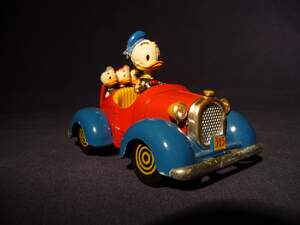

National Preschooler's Day
Observed
the second Friday in March
Dates
Hashtags
Sources
http://www.holidays-and-observances.com/march-8.html
https://en.wikipedia.org/wiki/Preschool
https://web.archive.org/web/20201128021123/http://preschooleducation.com/holidays/calmar13.shtml
https://www.earlychildhoodteacher.org/jobs/preschool-teacher/
https://www.eduvast.com/general-knowledge/national-preschoolers-day/
https://www.everythingpreschool.com/holidays/h2007/mar.htm
https://www.k12academics.com/systems-formal-education/preschool-education/history-preschool-united-states
Preschool is a form of early childhood education for children between ages three and five. National Preschooler's Day honors children who attend preschool and celebrates one of the most formative years of schooling. It takes place on the second Friday in March, a month which also happens to be Preschool Education Month.
Preschool may be a half or full day, and its setting may range from formal to informal. Goals of what skills preschool students should learn may be both broad and specific. Some broad skills that students should gain throughout their time in preschool include developing motor skills and social skills, learning about their environment, how to communicate and express themselves, how to share and follow rules, hygiene basics, and cultural values. Learning their full name, address, telephone number, parent or guardian's name, and the names of the weeks and months are all specific skills preschool children should learn.
Additionally, they may learn some basics of writing such as what the letters of the alphabet are, how to trace them, and how to write their name. They may learn basic math skills such as shapes, counting, and how to trace numbers. Science skills acquired will often include learning the names of some animals and the seasons. Social studies knowledge acquired may include learning the names of places they often visit as well as the names of common jobs in the community. Preschool students may also participate in arts and crafts, where they learn colors, how to use their imagination with projects, how to paint and draw, and what some instruments sound and look like.
Preschools got their start in the late eighteenth and early nineteenth centuries in Europe. In the United States, most preschools have tuition, but there has been an increase in public funding for them in recent decades, and many people are in favor of universal preschool, where funds are available for everyone to attend, just as they are with primary education. Some states have already implemented universal preschool.
Created in 1965, Head Start was the first publicly funded preschool in the United States, and was established to assist low-income children enrollment. At the time, only 10% of preschool-aged children were in preschool. By the 1980s, states began subsidizing preschools for low-income families. By the mid-2000s, almost 70% of 4-year-olds were enrolled in preschool. This increase can be attributed to higher maternal employment rates, national anti-poverty initiatives, and the spreading of research about the brain development of small children.
How to Observe National Preschooler's Day
If you have a child between the ages of three and five, or who will soon be this age, research preschools near you and enroll your child in preschool. Express thanks to your preschool teacher or the preschool teacher of your children. Thank them for their impact on your life or reflect on what their impact has been. Pick up a book about preschoolers such as The Most Important Year: Pre-Kindergarten and the Future of Our Children or The Importance of Being Little: What Preschoolers Really Need from Grownups.





















